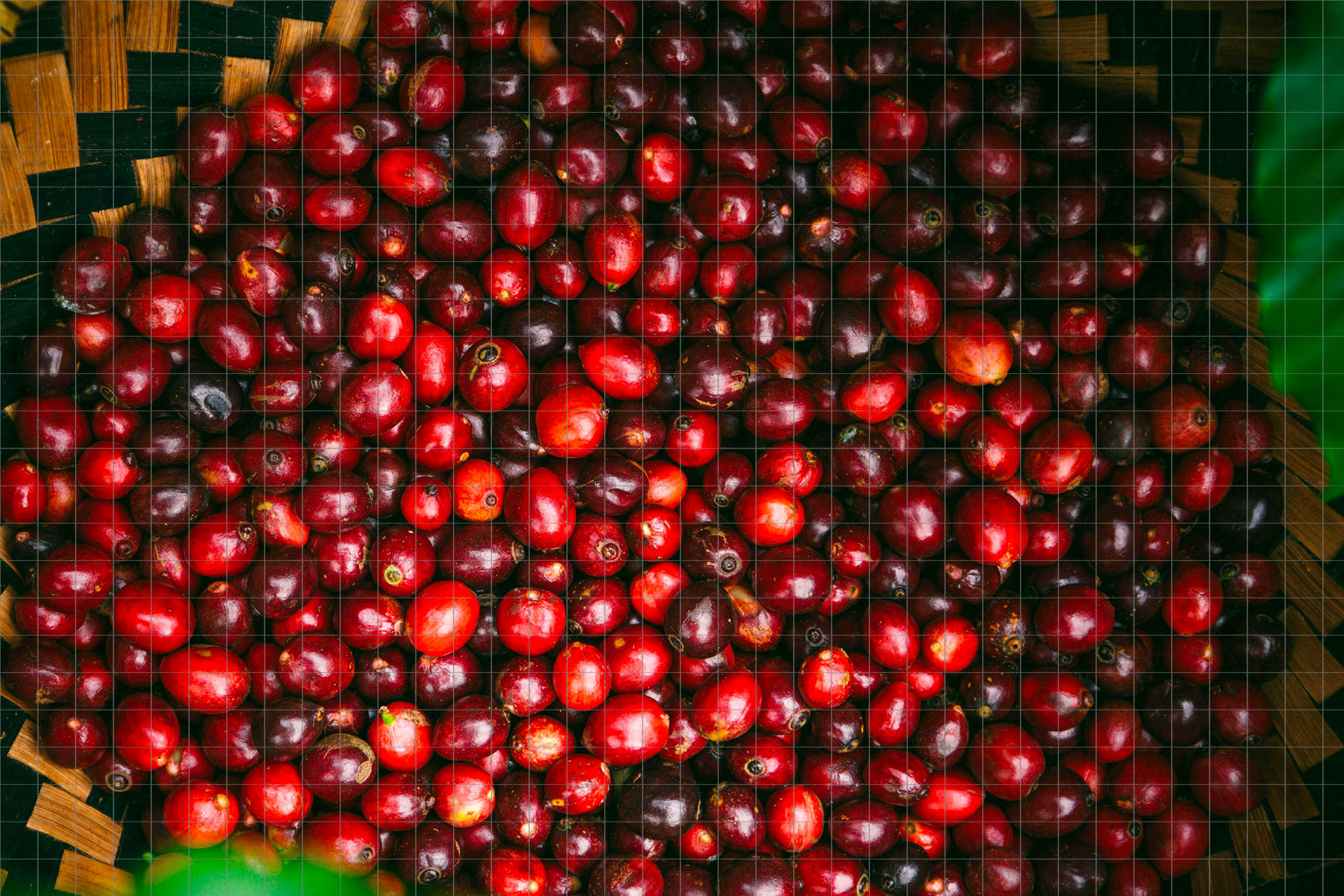Tracking “Black Gold” with Blockchain

Fixing the Broken Supply Chain of Coffee and Cocoa
Three-Dimensional Traceability
Coffee and cocoa are often referred to as “black gold,” not only for their color but also for the wealth they generate across continents. Yet, behind every espresso shot or chocolate bar lies a complex, opaque, and vulnerable supply chain that is prone to inefficiencies and injustices. Making these chains truly transparent requires a new approach to traceability, one that is not one-dimensional but three-dimensional.
Physical Traceability is the first dimension, and perhaps the most urgent. It refers to tracking the product itself—coffee beans or cocoa pods—through every stage of their transformation. Within each link of the chain, internal tracking ensures that inputs and outputs are accurately mapped, including which lots of beans were processed, how they were mixed, and what shipments they became. Across the chain, external tracking connects these links, allowing for backward monitoring, which is crucial for food safety. A contamination case, such as Ochratoxin A in coffee, demands immediate recall and/or withdrawal. Without physical traceability, the process becomes slow, costly, and incomplete. Consumers expect safety, and regulators require it.
Value Traceability builds on this physical layer by following the flow of money and value. Coffee and cocoa are both notorious for their inequitable value distribution: while global markets generate billions, smallholder farmers—who produce the majority—capture only a fraction of the final price. By tracing price changes and added value forward along the chain, we can reveal how margins accumulate, who benefits most, and where imbalances occur. Transparent value traceability exposes the gaps between farm-gate prices and retail shelf prices, creating pressure for fairer systems such as minimum price guarantees, premium certifications, or direct-trade contracts. It transforms the conversation from one of “origin stories” to one of “value justice.”
Legal Traceability is the third, and often overlooked, dimension. Coffee and cocoa production are deeply entwined with social and environmental issues, including deforestation, waterway pollution, labor exploitation, and land grabbing. Legal traceability involves documenting property rights, production processes, and ensuring compliance with laws and ethical standards. The absence of such documentation leads to abuses, where entire communities were forcibly evicted to make way for commercial coffee production. By creating a transparent legal record, it becomes possible to enforce sustainability standards, verify certifications, and protect farmers and local communities from exploitation. Legal traceability thus extends the scope of transparency beyond logistics and economics into the realms of justice and rights.
Taken together, these three dimensions form a holistic vision of traceability. Only when physical, value, and legal aspects are integrated can the coffee and cocoa industries claim to be truly transparent and sustainable.
Blockchain & ICT for Coffee & Cocoa Traceability
Achieving such multi-layered traceability is easier said than done. Traditional systems are fragmented, often paper-based, and prone to manipulation. Even digital platforms can be siloed, inconsistent, or dependent on trust in central authorities. This is where blockchain technology—and, more broadly, the integration of advanced ICT—offers a paradigm shift.
Distributed Ledger Technology (DLT) ensures that every transaction, from farm harvest to final retail sale, is recorded in an immutable ledger. Unlike centralized databases, blockchain records cannot be altered retroactively, making them reliable sources of truth. Farmers’ deliveries, cooperative processing, export documentation, and roasting details can all be logged transparently.
Non-Fungible Tokens (NFTs) extend this by giving unique digital identities to specific lots of coffee or cocoa. Each token can carry metadata: the farm of origin, sustainability certifications, proof of organic production, and ownership history. For specialty coffee micro-lots or fine-flavor cocoa, NFTs allow roasters, chocolatiers, and consumers to trace their product in unprecedented detail.
Smart Contracts then automate the rules of the game. A smart contract could ensure that farmers are paid above a minimum threshold, that lots cannot be certified “deforestation-free” without satellite confirmation, or that logistics data must be uploaded before shipments are cleared. Automation reduces room for corruption and ensures accountability at every stage.
Yet blockchain is only one part of the puzzle. To achieve meaningful traceability, it must be combined with other ICT tools:
- Satellites and GPS: Satellite imagery allows stakeholders to verify land use, monitor deforestation, and confirm whether farms comply with environmental regulations. GPS-enabled logistics ensures accurate tracking of shipments across borders.
- IoT Devices and Sensors: Storage and shipping conditions heavily affect quality. IoT sensors can measure temperature, humidity, or even chemical residues, feeding this data directly into blockchain records to create a tamper-proof quality assurance system.
- Connectivity Infrastructure: For all this to work, rural farmers—the very start of the supply chain—must be connected. Affordable Internet and mobile applications are essential to integrate smallholders, ensuring that the “first mile” of the chain is no longer invisible.
The result is a digital ecosystem where the three dimensions of traceability are no longer aspirational but operational. Physical traceability is achieved through the integration of IoT and GPS data with blockchain technology. Value traceability is enabled by transparent ledgers and smart contracts that follow financial flows. Legal traceability becomes enforceable through satellite evidence and immutable documentation of rights and obligations.
Getting Real: Pilot Projects and Existing Solutions
The vision of blockchain-enabled traceability is no longer confined to theoretical discussions; it is now a reality. In recent years, it has begun to take shape through concrete pilot projects and commercial implementations across the coffee, cocoa, and related industries. These initiatives demonstrate how technological innovation can be integrated into complex agricultural supply chains, offering greater transparency, accountability, and value creation.
One significant example comes from the Italian chocolate maker ICAM, which has partnered with Trusty to digitize its cocoa supply chain. By recording farmers’ deliveries, processing steps, and export transactions on a shared digital ledger, ICAM can offer consumers verifiable proof of sustainable sourcing and ensure transparency from bean to bar. A similar push for traceability can be seen in the coffee sector, where Edy Bieker of Sandalj Trading has underscored how digitally traceable coffees are becoming essential for premium markets. Through detailed digital records, buyers gain access not only to quality data but also to complete histories of origin, strengthening both trust and the storytelling power of brands.
Efforts to systematize these approaches are also underway. The Istituto Sistemi Informativi e Networking (ISIN) has proposed blockchain-based frameworks explicitly designed for agricultural supply chains, emphasizing standardization and interoperability. These elements are crucial if blockchain traceability is to move beyond isolated pilot programs and become an industry-wide infrastructure. Complementing these institutional efforts, the Gremlich Coffee System offers a specialized blockchain platform for coffee beans, allowing roasters and importers to verify authenticity and origin while minimizing the risk of fraud and mislabeling.
Lessons are also emerging from adjacent industries. The Meregalli Group has successfully applied blockchain to the wine and spirits sector, using it to enhance transparency in luxury beverage markets—a strategy that coffee and cocoa producers can emulate, given their growing positioning as premium commodities. Cantinium has gone a step further by integrating NFTs into its system to safeguard the authenticity of fine wines. This approach has clear parallels in the coffee and cocoa industries, where NFTs could represent rare micro-lots, certify provenance, and even create collectible or premium product experiences for consumers.
At the European level, Trusty has launched broader initiatives focused on integrating blockchain solutions to enhance the safety and transparency of cocoa and coffee supply chains. These projects show that blockchain can function not only as a marketing tool but also as a mechanism for regulatory compliance and consumer assurance. Trusty has also taken advantage of events like International Coffee Day to raise awareness and promote blockchain traceability, a sign that the conversation has shifted from niche experimentation to mainstream industry dialogue.
Together, these examples provide a glimpse of what a fully digitized and transparent supply chain could look like. They demonstrate that blockchain is already being utilized to address some of the most pressing challenges in the coffee and cocoa industries, laying the groundwork for broader adoption and systemic change.
Coffee and cocoa may still face complex challenges—from price volatility to climate change—but a new digital toolkit is emerging. By embedding physical, value, and legal traceability into immutable and transparent systems, blockchain and ICT are laying the foundation for supply chains that are not only efficient but also fair and sustainable. The future of “black gold” depends on it.




